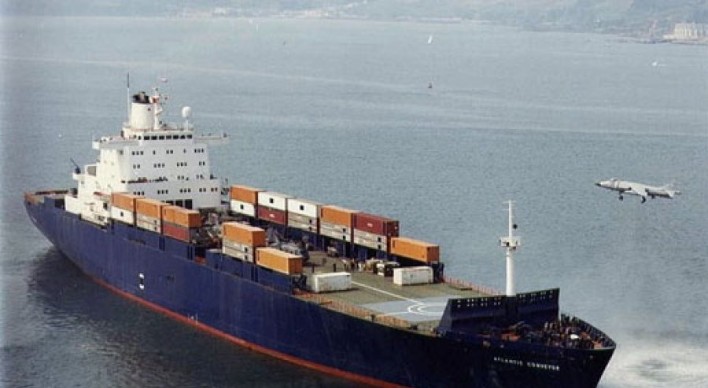
Chances are, if you have heard of the Jones Act, you probably think it needs to be repealed. That is, at least, the consensus in the economics profession. However, this consensus seems to be driven by an application of the sort of rules of thumb that one picks up from economics courses, rather than an application of economic theory.
For those who are unaware, the Jones Act requires that any shipping between two U.S. ports is carried by a U.S.-built ship with a crew of U.S. citizens that is U.S.-owned and flies the U.S. flag. When those who have memorized some of the rules of thumb in the field of economics hear that description, they immediately think “this is protectionism and protectionism is bad.” It therefore seems obvious that the Jones Act must be bad. After all, based on this description, it seems like it is designed to protect U.S. shipbuilders, U.S. crews, and U.S.-flagged ships from foreign competition.
Critics seize on this narrative. They point to the higher cost of Jones Act ships in comparison to those ships that fly foreign flags and argue that the current law has costs that are astronomical. Based on that type of criticism, the Jones Act seems so obviously costly that one might wonder how it is possible to defend the law in any way.
I reject this criticism. I do not reject this over some minor quibble with the numbers. In true Hendricksonian fashion, I reject this criticism because it gets the underlying economic theory wrong.
Let’s start by thinking about some critical issues in Coasean terms. During peacetime, the U.S. Navy does not need maintain the sort of capacity that it would have during a time of war. It would not be cost-effective to do so. However, the Navy would like to expand its capacity rapidly in the event of a war or other national emergency. To do so, the country needs shipbuilding capacity. Building ships and training crews to operate those ships, however, takes time. This might be time that the Navy does not have. At the very least, this could leave the United States at a significant disadvantage.
Of course, there are ships and crews available in the form of the U.S. Merchant Marine. Thus, there are gains from trade to be had. The government could pay the Merchant Marine to provide sealift during times of war and other national emergencies. However, this compensation scheme is complicated. For example, if the government waits until a war or a national emergency, this could create a holdup problem. Knowing that the government needs the Merchant Marine immediately, the holdup problem could result in the government paying well-above-market prices to obtain these services. On the other hand, the government could simply requisition the ships and draft the crews into service whenever there is a war or national emergency. Knowing that this is a possibility, the Merchant Marine would tend to underinvest in both physical and human capital.
Given these problems, the solution is to agree to terms ahead of time. The Merchant Marine agrees to provide their services to the government during times of war and other national emergencies in exchange for compensation. The way to structure that compensation in order to avoid holdup problems and underinvestment is to provide this compensation in the form of peacetime subsidies.
Thus, the government provides peacetime subsidies in exchange for the services of the Merchant Marine during wartime. This is a straightforward Coasean bargain.
Now, let’s think about the Jones Act. The Jones Act ships are implicitly subsidized because ships that do not meet the law’s criteria are not allowed to engage in port-to-port shipping in the United States. The requirement that these ships need to be U.S.-owned and fly the U.S. flag gives the government the legal authority to call these ships into service. The requirement that the ships are built in the United States is designed to ensure that the ships meet the needs of the U.S. military and to subsidize shipbuilding in the United States. The requirement to use U.S. crews is designed to provide an incentive for the accumulation of the necessary human capital. Since the law restricts ships with these characteristics for port-to-port shipping within the United States, it provides the firms rents to compensate them for their service during wartime and national emergencies.
Critics, of course, are likely to argue that I have a “just so” theory of the Jones Act. In other words, they might argue that I have simply structured an economic narrative around a set of existing facts. Those critics would be wrong for the following reasons.
First, the Jones Act is not some standalone law when it comes to maritime policy. There is a long history in the United States of trying to determine the optimal way to subsidize the maritime industry. Second, if this type of policy is just a protectionist giveaway, then it should be confined to the maritime industry. However, this isn’t true. The United States has a long history of subsidizing transportation that is crucial for use in the military. This includes subsidies for horse-breeding and the airline industry. Finally, critics would have to explain why wasteful maritime policies have been quickly overturned, while the Jones Act continues to survive.
The critics also dramatically overstate the costs of the Jones Act. This is partly because they do not understand the particularities of the law. For example, to estimate the costs, critics often compare the cost of the Jones Act ships to ships that fly a foreign flag and use foreign crews. The argument here is that the repeal of the Jones Act would result in these foreign-flagged ships with foreign crews taking over U.S. port-to-port shipping.
There are two problems with this argument. One, cabotage restrictions do not originate with the Jones Act. Rather, the law clarifies and closes loopholes in previous laws. Second, the use of foreign crews would be a violation of U.S. immigration law. Furthermore, this type of shipping would still be subject to other U.S. laws to which these foreign-flagged ships are not subject today. Given that the overwhelming majority of the cost differential is explained by differences in labor costs, it therefore seems hard to understand from where, exactly, the cost savings of repeal would actually come.
None of this is to say that the Jones Act is the first-best policy or that the law is sufficient to accomplish the military’s goals. In fact, the one thing that critics and advocates of the law seem to agree on is that the law is not sufficient to accomplish the intended goals. My own work implies a need for direct subsidies (or lower tax rates) on the capital used by the maritime industry. However, the critics need to be honest and admit that, even if the law were repealed, the cost savings are nowhere near what they claim. In addition, this wouldn’t be the end of maritime subsidies (in fact, other subsidies already exist). Instead, the Jones Act would likely be replaced by some other form of subsidy to the maritime industry.
Many defense-based arguments of subsidies are dubious. However, in the case of maritime policy, the Coasean bargain is clear.




